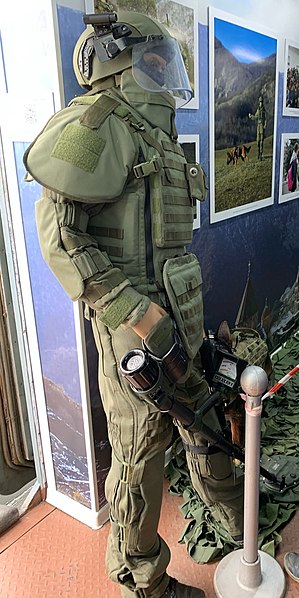Tunnel warfare is using tunnels and other underground cavities in war. It often includes the construction of underground facilities in order to attack or defend, and the use of existing natural caves and artificial underground facilities for military purposes. Tunnels can be used to undermine fortifications and slip into enemy territory for a surprise attack, while it can strengthen a defense by creating the possibility of ambush, counterattack and the ability to transfer troops from one portion of the battleground to another unseen and protected. Also, tunnels can serve as shelter from enemy attack.
Diorama of defensive tunnels dug during the Second Sino-Japanese War
Explosion of the mine beneath Hawthorn Ridge Redoubt on the Western Front during World War I (July 1, 1916). Photo by Ernest Brooks
A Confederate counter mine burrow at Fort Mahone, Petersburg, Virginia
Example of a mine gallery with timber roof support
A sapper, also called a combat engineer, is a combatant or soldier who performs a variety of military engineering duties, such as breaching fortifications, demolitions, bridge-building, laying or clearing minefields, preparing field defenses, and road and airfield construction and repair.
Modern sapper equipment
Soldiers of No 2 Field Company, Bombay Sappers and Miners on duty in China in 1900. The mule carries the tools required for field engineering tasks.
The fort of Ghazni which fell as a result of mining by a mixed contingent of the Bombay and Bengal Sappers during the First Afghan War on 23 July 1839.
A sapper of the Royal Engineers watches as soldiers reinforce security at FOB (Forward Operating Base) Shawqat in Afghanistan.








